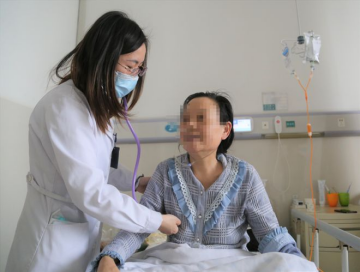
In November 2011, the patient presented with a concerning set of symptoms. Without any apparent trigger, he began experiencing intense thirst and an insatiable urge to drink, known as polydipsia. Concurrently, he noticed a significant and unexpected decline in his body weight. Alarmed by these developments, he sought medical advice from a local doctor. Subsequent examinations revealed that his intravenous fasting glucose level was a staggering 15.6 mmol/L, and his glycosylated hemoglobin stood at 10.6%. Taking into account these test results and his related symptoms, he was diagnosed with type II diabetes, marking the start of his journey to manage this chronic condition.
Pre-Treatment Condition (Before the First Course of Treatment)
• Manifested Symptoms
The patient has been plagued by a series of distressing symptoms. He experiences an unquenchable thirst, constantly feeling parched, which leads to polydipsia, an excessive intake of fluids. Simultaneously, he has witnessed a notable decrease in his body weight. This weight loss is not due to intentional dieting or increased physical activity but rather a consequence of his underlying condition, leaving him visibly thinner and causing concerns about his overall health.
• Abnormal Test Indices
Regarding his physiological indices, both his intravenous fasting glucose and glycosylated hemoglobin are alarmingly higher than the normal range. The elevated intravenous fasting glucose level indicates that his body is struggling to regulate blood sugar effectively even after an overnight fast. These abnormal readings are clear signs of a disordered glucose metabolism.
• Whole - Body Weakness
Another significant symptom the patient endures is a pervasive sense of weakness throughout his entire body. This weakness is not limited to a specific muscle group or area but affects his overall physical function.
First Course of Stem Cell Treatment (Jan 2012 )
Outcomes After the First Course of Treatment
• Symptom Resolution and Weight Restoration
The patient has experienced a remarkable turnaround. His once-persistent symptoms of thirst and polydipsia have completely vanished. No longer does he feel the constant need to drink large amounts of fluids to quench his insatiable thirst. Moreover, his body weight has steadily increased and is now back within the normal range. This weight gain is a positive sign, indicating that his body's metabolism is stabilizing, and he is regaining the strength and vitality that were lost during his illness.
• Normalized Blood Sugar Indices
A significant achievement is the normalization of his blood sugar-related indices. Both his intravenous fasting glucose and glycosylated hemoglobin levels have returned to normal values. This indicates that his body has regained the ability to regulate blood sugar effectively. The normal fasting glucose shows that his body can maintain a healthy blood sugar level after an overnight fast, while the normal glycosylated hemoglobin reflects that his average blood sugar over the past few months has been well - controlled.
• Reduced Complication Risk
The reduction in the risk of related complications is a major milestone in his recovery. With his blood sugar under control, the likelihood of developing serious complications such as diabetic neuropathy, nephropathy, and retinopathy has significantly decreased. This not only improves his long-term health prospects but also alleviates his concerns about potential future health problems.
• Restored Energy
The patient has also noticed a dramatic improvement in his energy levels. He no longer feels the overwhelming fatigue and weakness that once plagued him. Instead, he has regained his energy
Progress Summary & Future Outlook
Given the patient's remarkable progress, the future looks bright. With normal blood sugar indices and symptom remission, he can anticipate a continued reduction in long-term health risks. This new - found energy will enable him to engage in a more active lifestyle. As his body continues to adapt, he may be able to maintain normal blood sugar levels with even less reliance on medication. This could lead to a full integration back into social and work life, free from the constant worry of diabetes-related issues, and a chance to enjoy a long, healthy life.


